 |
 |
 |
| |
EASL 2022 HCV Wrap-Up: Very Far from WHO Goals-HCC
& Deaths Increasing-Infections Not Improving Much
|
| |
| |
We Are Very Far From WHO Goals of HCV Elimination -HCC Increasing - Liver-Related Deaths Increasing for HBV But Not Declining for HCV
"The level of global infections is dimishing but diminishing very very slowly. We will remain with 250 HBV infections in 2030 in the world. And with 50 million HCV infections. This is very far from the WHO goal.
If you look at the incidence of new infections you see its also diminishing slowly for HCV, a little bit more rapidly for HBV thanks to vaccinations. But still these numbers are very high."
"More importantly the global incidence of HCC is increasing in the world & continues to increase not so much for HCV as HCV remains stable - its NOT diminishing - but very much for HBV related HCC and this translates into an increase in the Global Annual Liver Related Deaths which is increasing for HV & remaining stable for HCV."
"So, we are very far from the objectives and there are several reasons for that - the usual ones - lack of prevention, lack of implementation, bad linkage-to-care and some of them were illustrated at this EASL"
Excerpts from HCV wrap-up.
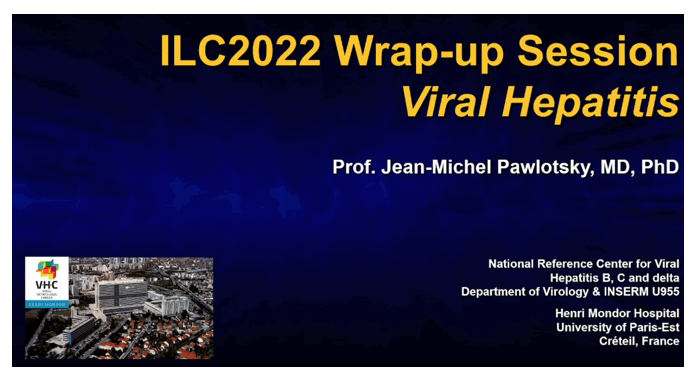
WHO vision into eliminate viral hepatitis as a major public health threat by 2030. "This is a very ambitious goal that is unlikely to be achieved".
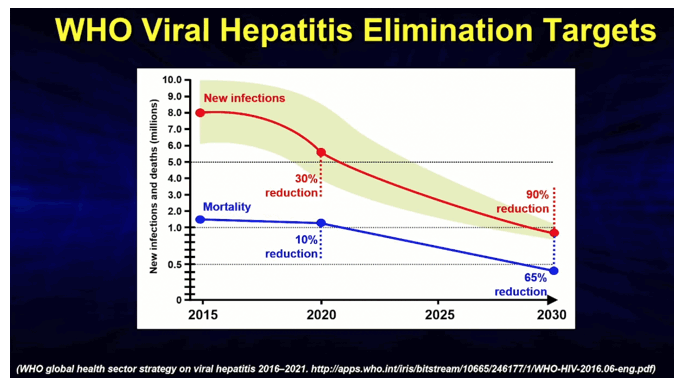
"The level of global infections is dimishing but diminishing very very slowly. We will remain with 250 HBV infections in 2030 in he world. And with 50 million HCV infections. This is very far from the WHO goal.
If you look at the incidence of new infections you see its also diminishing slowly for HCV, a little bit more rapidly for HBV thanks to vaccinations. But still these numbers are very high."
EASL: Evaluation of Global Progress towards HBV and HCV elimination - off track - (06/23/22)
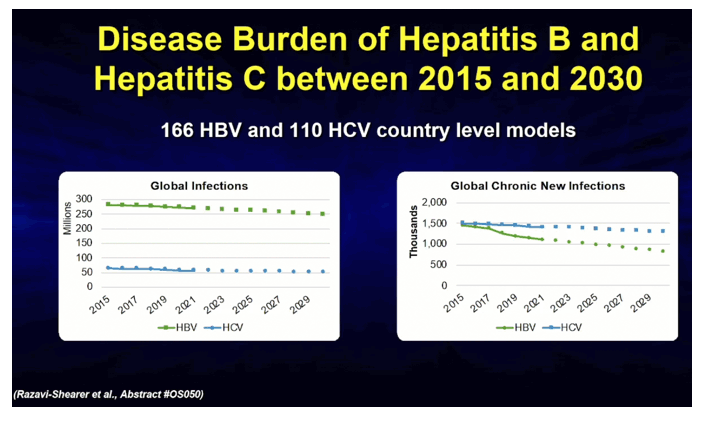
"More importantly the global incidence of HCC is increasing in the world & continues to increase not so much for HCV as HCV remains stable - its NOT diminishing - but very much for HBV related HCC and this translates into an increase in the Global Annual Liver Related Deaths which is increasing for HV & remaining stable for HCV."
"So, we are very far from the objectives and there are several reasons for that - the usual ones - lack of prevention, lack of implementation, bad linkage-to-care and some of them were illustrated at this EASL"
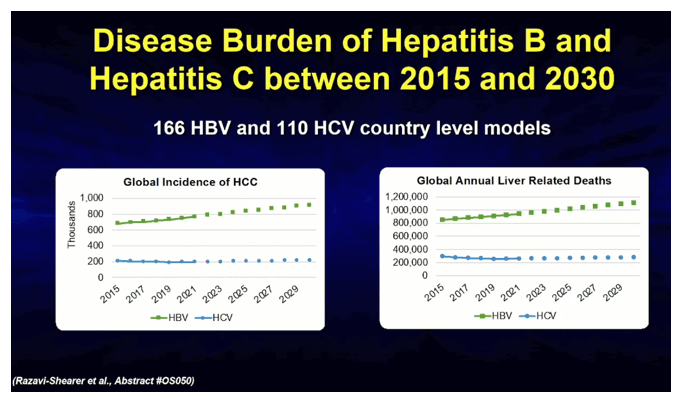
"HCV is still transmitted even in high-income countries. This is comparison of epidemic in pre & post DAA era. You can see in 1st panel in upper left of 134 acute HCV cases in 119 patients. You can see cases before DAA from 2007 til 2018 & also after 2018.
But he nature of the cases changed. In 2nd panel in bottom left you see reinfections were frequent before and became much less frequent after DAAs became available. There were many cases of acute HCV in HCV-naives.
This is likely explained in top right bar - less acute infections in PWIDs in DAA era, reinfections do occur to high-risk PWIDs. The implementation of DAAs had a affect on prevention and the reservoir. More infections occurred in MSM.
You can see in lower right panel there wee no infections in HIV-negatives before the DAA era. In the DAA era there were equal numbers of infections between HIV+ & HIV-neg, "the majority of MSM". The conclusion is obvious - prevention, diagnosis & early access to treatment are needed".
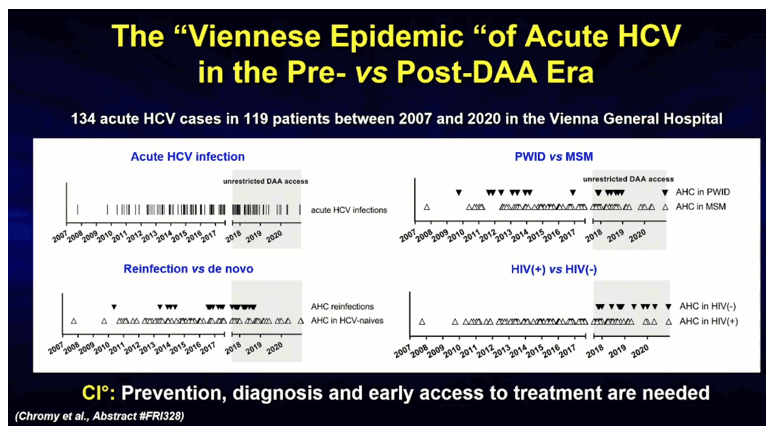
EASL: Impact of Direct-Acting Antiviral Treatment for Hepatitis C on Cardiovascular Diseases and Extrahepatic Cancers - (06/24/22)
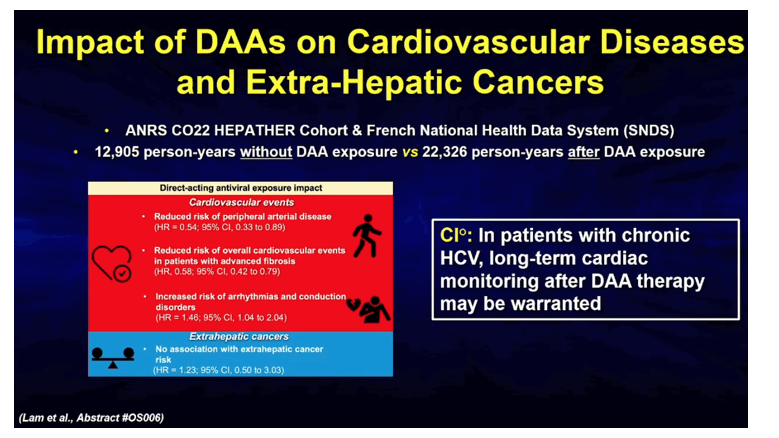
EASL: Sofosbuvir plus velpatasvir for 8 weeks in patients with acute hepatitis C: Multicenter, single arm, phase 2 Study The HepNet acute HCV V study - (06/23/22)
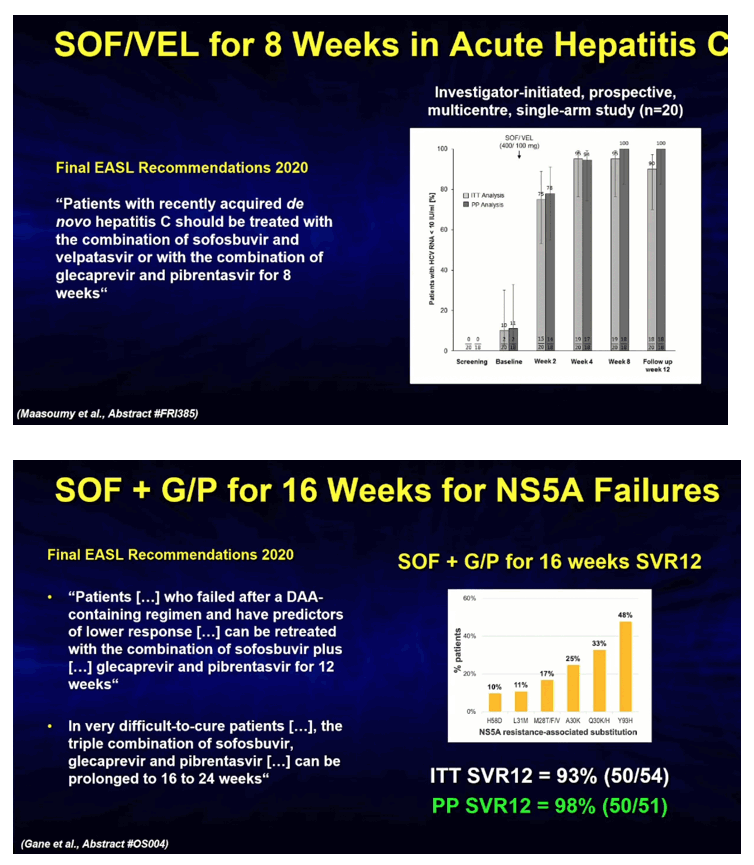
|
| |
|
 |
 |
|
|